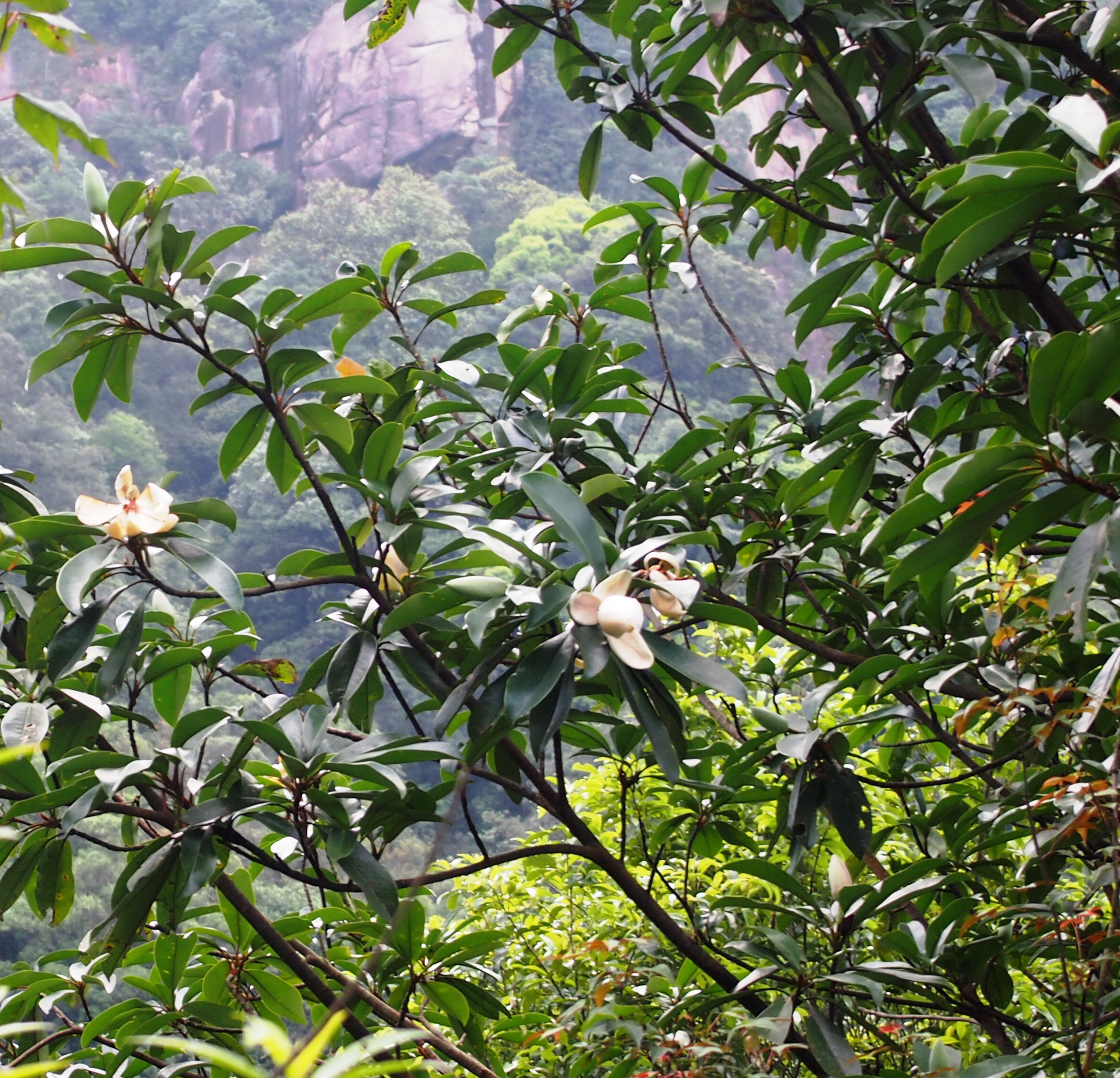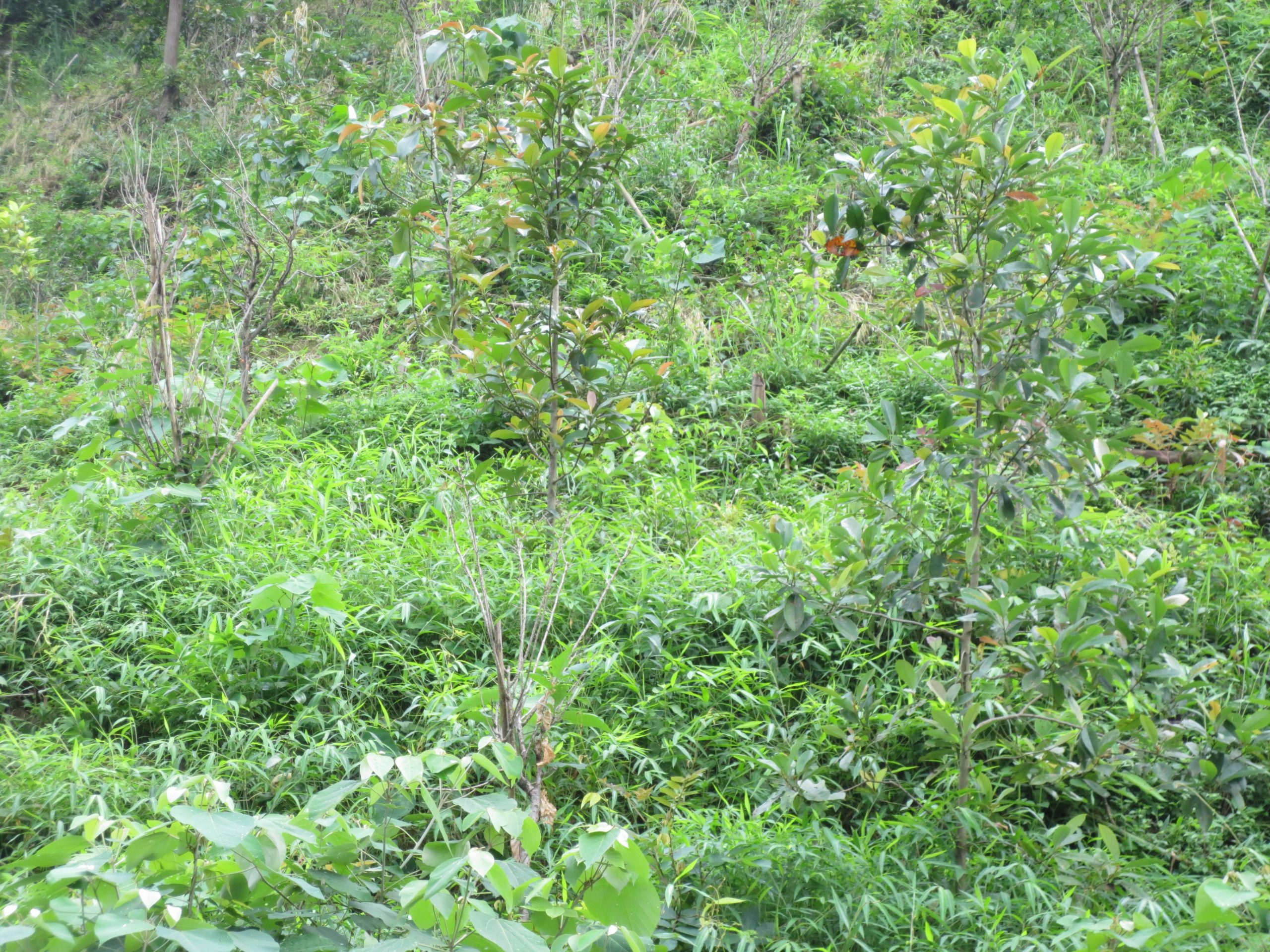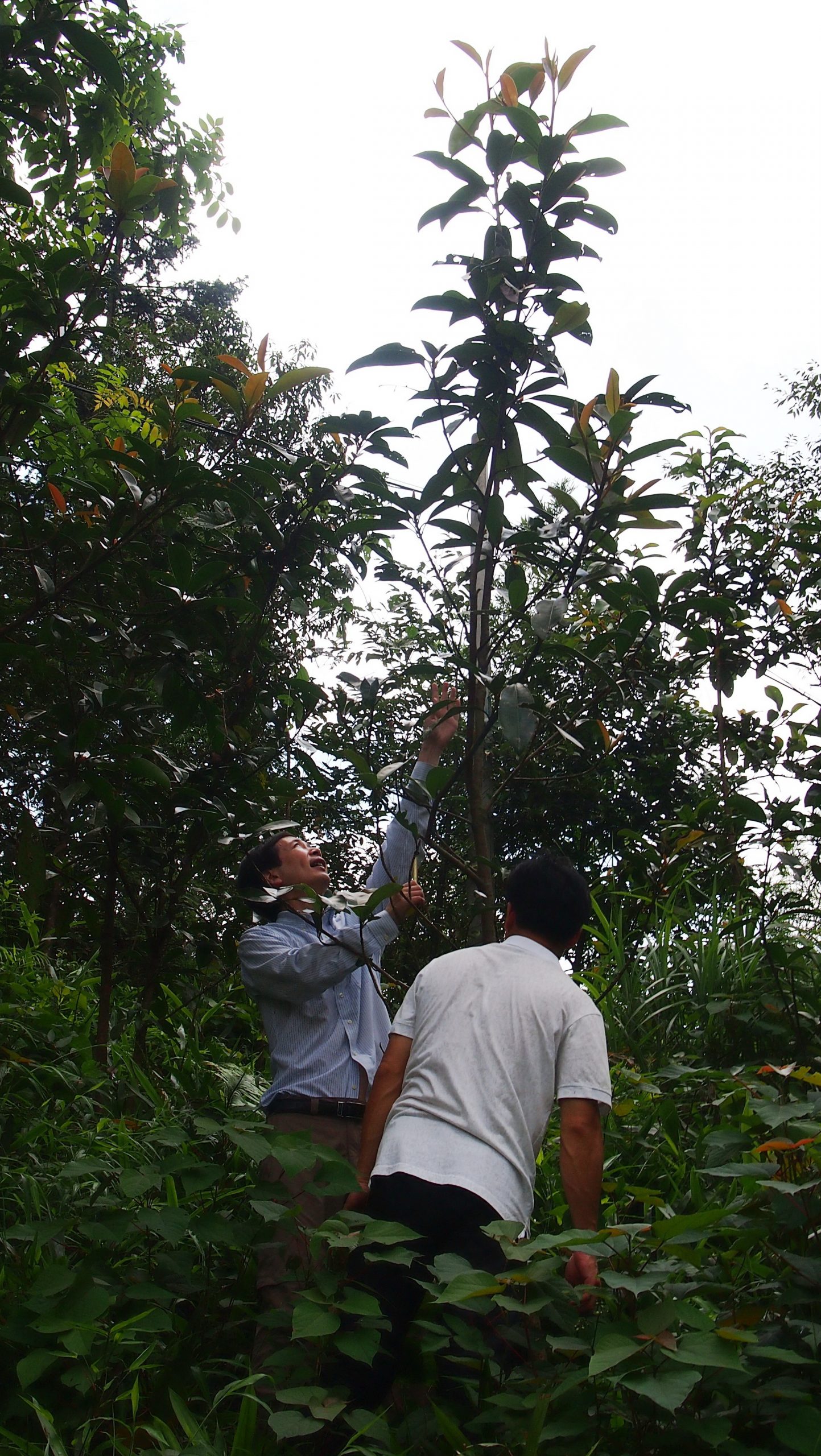Magnolia longipedunculata: the climate migrant, putting in the hard graft to survive
-
Country
China -
Programme
Global Trees Campaign -
Workstream
Saving Plants -
Topic
Tree Conservation -
Type
Blog -
Source
BGCI
Scientific trials reveal new planting techniques improve germination success and seedling health of a Critically Endangered species of Magnolia.

Magnolia longipedunculata is a Critically Endangered species with only 11 trees left in the wild. The entire global population is found within one site in south-east China, the Nankunshan Nature Reserve in Guangdong. This tiny population has put up a true fight for survival; all the remaining 11 individuals have re-sprouted from stumps that were logged many years ago.
Due to this small population size, the species is at extremely high risk of extinction. It also has poor reproductive capacity, probably due to the lack of pollinators during its short flowering period. The fact that the species range is so restricted leaves it very vulnerable to a change in climate – therefore an innovative conservation project is now underway to ensure its future survival.
The seeds of success
Two pioneering planting trials started in 2008 – one to augment the existing population and the other to translocate seedlings grown in nurseries to a brand new site, about 200 km north of the species current range. The new site in the Tianxin Nature Reserve was chosen to both increase the population and to buffer against threats, such as climate change. Both the seedlings produced from seeds (emerged seedlings) as well as grafted seedlings (using another Magnolia species) were used in the planting.

Although both the emerged and grafted seedlings of M. longipedunculata survived and grew well at both experimental sites, the grafted seedlings were a lot stronger and thus, grew taller and more of them survived. The grafted seedlings also reach flowering at an earlier age. The trials showed that grafting was more effective to reinforce existing populations and establish new populations of M. longipedunculata.
Climate migrants
Despite these successes, Magnolia longipedunculata needs to follow an integrated approach including patrolling Nankunshan to prevent plant removal, establishing (with the aid of grafting) an ex situ living collection that contains the entire genetic diversity of the wild population. This ex situ collection could then contribute to propagating seedlings for species reintroduction into the wild. As a secondary benefit the ex situ collections could also facilitate the propagation of M. longipedunculata seedlings for commercial use, so wild trees are no longer harvested in their native habitat – which was the cause for the decline of this species making it Critically Endangered in the first place.

The techniques used in this project could inform the management and restoration of other threatened species. Many other highly threatened tree species face the same problem, they cannot move as conditions change, like some animals can. The work trialed here shows translocations of highly threatened species to new areas can work but raises questions around how far we should take these climate migrants which, if left to their own fate, could be lost forever.
Selected reference:
Ren et al. (2015) The use of grafted seedlings increases the success of conservation translocations of Manglietia longipedunculata (Magnoliaceae), a Critically Endangered tree Oryx. doi:10.1017/S0030605315000423 (Available here)
Written by Malin Rivers for GTC. Malin is the Head of Conservation Prioritisation at BGCI, working on various Red Listing projects and is the secretary of the Global Tree Specialist Group.
Become a Member
Be part of the largest network of botanic gardens and plant conservation experts in the world by joining BGCI today!
Support BGCI
You can support our plant conservation efforts by sponsoring membership for small botanic gardens, contributing to the Global Botanic Garden Fund, and more!